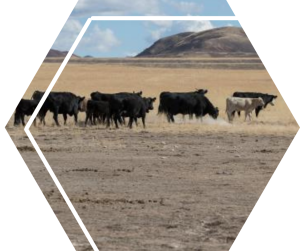
Phenomenon/Problem: Grazing cattle can manage the overgrowth of plants and can help the soil retain moisture. This is particularly important during unusually dry months. Their grazing can be used to create “fuel breaks,” which are strips where vegetation has been minimized or removed by cattle that eat large amounts of the flammable vegetation.
Stimuli: How will students experience and/or observe the phenomenon/problem?
Students will observe the visual phenomenon with a clip from a video (1:09-1:47) that briefly describes the use of cattle in fire management. Students can then discover more about the fire triangle, vegetative grass that fuels fire, and the cattle's diet. Students can conduct small-scale
controlled wildlife simulations with natural firebreaks mimicking cattle grazing strategies.
Essential Questions:
How do the interactions between grazing cattle, plant growth, and soil conditions influence ecosystem stability and wildfire risk, particularly during drought conditions?
Related Phenomena/Problems:
● Invasive plant species like cheatgrass dry out faster and increase wildfire risks in certain ecosystems, like the
Great Basin and California’s Central Coast and North Bay.
● Native plants in arid regions have adapted with waxy coatings and small leaves to minimize water loss.
● Controlled (prescribed) burns are used in forest management to reduce dry vegetation and prevent severe
wildfires.
● Rotational grazing systems are designed to improve pasture health, reduce soil erosion, and increase plant
biodiversity versus continuous grazing, where cattle graze on a large, undivided pasture throughout the grazing
season, which can lead to poor pasture utilization, soil degradation, and reduced forage quality.
● Prairie grasses have deep root systems that help stabilize soil and retain moisture during droughts.
● Fire management strategies like prescribed burns, brush clearing, innovative construction, and infrastructure.
● Crop spacing and tree spacing as a fire prevention method.
Considerations for Instructional Design:
● Engage students in analyzing and interpreting data (SEP: Analyzing and Interpreting Data) by examining wildfire destruction patterns (CCC: Patterns) in the United States, particularly in the Great Basin, to identify trends in fire frequency, intensity, and environmental impact.
● Guide students in constructing explanations (SEP: Constructing Explanations) that connect the fire triangle's three elements: heat, fuel, and oxygen, to modern wildfire management strategies and the role cattle grazing can play in reducing flammable vegetation.
● Encourage students to develop and use models (SEP: Developing and Using Models) by constructing miniature wildfire plains that simulate common vegetation types in fire-prone regions. Students will create their model using an aluminum cake pan and comparable vegetation found in their local area. With teacher supervision, the model will catch fire (with matches/lighter) in a secure and safe location. Students will observe fire size, height, and speed to consume the varying plant material with and without cattle grazing mitigation strategies.
● Students can compare fire behavior in areas with and without simulated grazing to observe the impact on fire spread and intensity (CCC: Cause and Effect).
● Prompt students to ask questions (SEP: Asking Questions) about the interactions between cattle grazing, plant growth, and soil conditions throughout the investigation. Students will seek answers through research, data analysis, and evidence collection (CCC: Stability and Change).
● Challenge students to apply systems thinking (CCC: Systems and System Models) by mapping the connections between grazing practices, soil moisture retention, ecosystem stability, and wildfire risk reduction.
Explanation:
In regions prone to wildfires like the Western and Southeast United States, targeted cattle grazing has emerged as a strategic land management practice that can reduce fire risks and improve ecosystem resilience. This approach takes advantage of cattle's natural grazing behavior to manage vegetation, which plays a significant role in wildfire behavior.
Wildfires are driven by the presence of three key elements — heat, fuel, and oxygen — collectively known as the fire triangle. While heat and oxygen are difficult to control in open landscapes, land managers can reduce wildfire risks by strategically managing the available fuel, which is often made up of dry grasses, shrubs, and other plant materials. This reduction in fuel can slow fire spread, decrease flame height, and lower overall fire intensity.
Targeted cattle grazing has proven to be an effective method for reducing this fuel load. Cattle naturally graze on grasses, forbs, and shrubs, selectively consuming plant materials that would otherwise become dry and flammable during drought conditions. Research has shown that winter grazing, in particular, can significantly reduce the biomass of fine fuels — the fast-drying grasses and small plants that ignite easily and contribute to rapid wildfire spread (Davies et al., 2005). By reducing this fine fuel layer, grazing limits both the size and intensity of potential fires.
Studies in sagebrush rangelands have demonstrated that grazed areas can have up to 60% less fine fuel biomass, which is the total quantity or weight of organisms in a given area or volume, compared to ungrazed sites (Davies et al., 2010). Additionally, grazed lands often experience shorter flame lengths, slower fire spread, and reduced ember production, which helps prevent fires from jumping across roads or natural firebreaks —areas where there is an absence of vegetation or "fuel," such as a river, lake, or canyon.
Backing Fires and Fire Breaks
Prescribed fire is typically part of state forest management. The least intense type of prescribed fire is called a backing fire, shown above on the left. Fire breaks must exist around proposed burn areas. These can be manmade, like a cleared pathway or road or natural, like a creek or stream, as shown above on the right.
From: https://content.ces.ncsu.edu/using-fire-to-improve-wildlife-habitat
Importantly, cattle grazing creates a more varied landscape structure. As cattle graze, they naturally produce patchy patterns of vegetation, breaking up continuous stretches of dry grasses. This "mosaic effect" disrupts fire pathways and further slows the spread of flames, giving firefighters improved access to control the blaze. When combined with other fire mitigation strategies, such as controlled burns and mechanical thinning, targeted grazing becomes a valuable tool in reducing wildfire risk across large landscapes (USDA Northwest Climate Hub, n.d.).
eyond directly reducing available fuel, cattle grazing can improve soil conditions in ways that further mitigate wildfire risks. When cattle consume excess plant material, they expose the soil surface to greater airflow and sunlight. This increased exposure enhances soil moisture retention, particularly in areas where plant overgrowth has previously limited evaporation and water infiltration.
Moist soils are a critical factor in slowing wildfire spread. Fire moves more slowly through damp ground, and plants with higher moisture content are less likely to ignite or sustain flames. In fact, research shows that areas with improved soil moisture can experience up to 40% slower fire spread rates compared to dry, compacted soils (Davies et al., 2009).
In addition to moisture retention, cattle grazing indirectly supports soil health by cycling nutrients. As cattle graze, they trample plant material into the soil, accelerating decomposition and nutrient return. This process encourages the growth of native plants, which often have deeper root systems that further improve soil stability and moisture absorption. Deeper-rooted plants are also more drought-resistant, adding another layer of protection during dry conditions.
Targeted grazing can also reduce the dominance of invasive species, such as cheatgrass, which is notorious for forming dense, dry mats that ignite easily and spread fire quickly. By encouraging a diverse plant community, grazing helps maintain a healthier ecosystem that is more resilient to fire and drought conditions (Taylor, 2006).
Together, these effects reduced fine fuel loads, improved soil moisture retention, and enhanced plant diversity, creating landscapes that are less susceptible to destructive wildfires while promoting long-term ecosystem health.
Targeted grazing is especially useful in creating fuel breaks, which are strategically grazed strips of land with minimal vegetation that can prevent wildfires from spreading across large landscapes. These breaks are strategically placed in high-risk areas such as roadsides, near communities, or along natural barriers to provide a buffer zone for firefighters (USDA Northwest Climate Hub, n.d.).
Targeted cattle grazing presents a sustainable and cost-effective solution to managing wildfire risks in fire-prone regions. By reducing available fuel, enhancing soil moisture retention, and creating effective fuel breaks, this method helps safeguard both human communities and ecosystems from the devastating impacts of wildfires.
Student and teacher questions about this phenomenon/problem that could be instructionally productive:
● Why are some regions more prone to wildfires than others?
● How are wildfires managed without animals playing a role in prevention?
● How do environmental conditions like drought, wind, or temperature affect wildfire behavior?
● Are there other animals or natural processes that reduce wildfire fuel, similar to cattle grazing?
● Should cattle grazing practices that have negative impacts be used to reduce wildfire?
● How do ranchers manage cattle grazing to balance reducing wildfire risk with maintaining healthy plant growth?
● How has the size and intensity of wildfires changed over the past few decades, and what role does land management play in that trend?
Explaining the phenomenon/problem or related phenomena could lead students toward developing the following DCIs:
● HS-ESS3.A: Natural Resources
o Resource availability has guided the development of human society, and understanding resource
distribution is crucial for sustainable management of Earth’s resources.
● HS-ESS3.B: Natural Hazards
o Natural hazards and the risks associated with them are influenced by both natural processes and human activities. Mitigating risks involves understanding human impacts on natural systems.
● HS-ESS3.C: Human Impacts on Earth Systems
The sustainability of human societies and the biodiversity that supports them requires responsible management of natural resources and ecosystems.
● HS-LS2.C: Ecosystem Dynamics, Functioning, and Resilience
o Ecosystems are dynamic in nature; their characteristics can vary over time. Disruptions to any physical or biological component of an ecosystem can lead to shifts in its populations.
● HS-LS2.B: Cycles of Matter and Energy Transfer in Ecosystems
o Photosynthesis and cellular respiration provide most of the energy for life processes. Matter cycles between the air, soil, and organisms.
● HS-LS2.C: Ecosystem Dynamics, Functioning, and Resilience
o A complex set of interactions within an ecosystem can keep its numbers and types of organisms relatively constant over long periods of time under stable conditions. Extreme fluctuations in conditions or the introduction of new species can lead to ecosystem change.
Notes about relevance and authenticity (funds of knowledge, interests, identity)
Why might students be engaged?
● A relevant topic in the news recently from the Palisades, Eaton, and Hughes wildfires in the Los Angeles area
● The topic bridges biology, chemistry, environmental science, and engineering in authentic ways
● It provides opportunities for discussion and reflection around real-world solutions to wildfire prevention
● It addresses both agricultural practices familiar to rural students
● It addresses environmental concerns important to many students
● Types, intensity, causes, and locations of wildfires
● Solutions require creativity and critical thinking - not one solution will fit all areas impacted by wildfires
● Incorporates natural animal management practices in possible solutions
● Human management practices as solutions to natural disasters (ex., fire)
● Environmental challenges solved by wildlife management
● Wildfire impact on local communities that aren’t in a wildfire-risk area
Resources/References
Converse, S. J., White, G. C., & Farris, K. L. (2006). Small mammal responses to thinning and wildfire in Ponderosa Pine–
dominated forests of the Southwestern United States. Journal of Wildlife Management, 70(6), 1711-1722.
Davies, K. W., Svejcar, T. J., & Bates, J. D. (2005). Winter grazing can reduce wildfire size, intensity, and behavior in a shrubgrassland.
International Journal of Wildland Fire. Retrieved from
https://owri.oregonstate.edu/sites/agscid7/files/eoarc/attachments/854_winter_grazing_2015.pdf
Taylor, C. (2006). Targeted grazing to manage fire risk. University of Idaho. Retrieved from
https://www.webpages.uidaho.edu/rx-grazing/Handbook/Chapter_12_Targeted_Grazing.pdf
USDA Northwest Climate Hub. (n.d.). Targeted grazing for wildfire fuel breaks. Retrieved from
https://www.climatehubs.usda.gov/hubs/northwest/topic/targeted-grazing-wildfire-fuel-breaks
